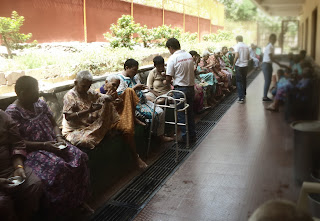Shades of education in India
As per the recent ASER report which conducts surveys annually, it painted a sad face of education in India. The data is retelling how the students in higher classes are unable to grasp the material from the classes below it, both comprehensive and analytical. Rote learning has been destroying the lives of children without actually imparting them the basic skills required for conducting themselves in the future.
There is a lot of confusion with respect to which languages should be promoted in the schools? Should it be the native local language? Should it be Hindi or English? If it is Hindi, then it will hamper the local native languages, but then why is Hindi the official language of India? We know that only 40 percent of the people actually understand Hindi, less so English which is about 5-10 percent. There are 22 scheduled languages, the meaning of which is that they are scheduled in the constitution of India based on the quantum of people using it. Researchers say that education imparted in the native language help students grasp the most. English is the language proudly spoken in the corporates, various institutions of higher education contrary to its local level usages. Why does it have to be that English to be spoken outside and native languages at home? Most of the higher generation does not understand English. Does not this create an inter-generational gap? Children underestimate their higher generation. Many people only understand their native language. English continues to haunt & alienate them. Students who have low exposure to English are the one often lag behind considering the fact that it is the language of the institutions. It gives them an unequal playing ground to compete with other better spoken, mostly from urban cities from a well to do private schools. This is one reason for students feeling unconfident. This should be systematized at utmost priority.
Penetration of technology speaks dull in rural areas where 85-90 crore of the people reside. Only 30% of the Indians are using a smartphone which means even a lesser number of students could access the online educational content from YouTube channels, educational websites, apps launched by the government. While the internet will soon be clouded by the blockchain, Artificial Intelligence or newer forms of technology, there is more than 70% of the population who are under shaded from the internet. Let alone that, most of the schools in rural areas are one room shabby buildings without the presence of proper toilet, electricity and yes the Teachers. No surprise that although we have attained near 100% enrolment in primary levels, only 20% opt for the higher education for graduation, rest of the students drop out of the schools because of various reasons. The situation of girls attending schools is even worrisome. Even today they are not allowed to go to schools when they start menstruating. This is social taboo and will not be broken if we continuously plague the national debates with Hindu-Muslim, Mandir-Masjid, Nehru-Bose, Gandhi-Godse & Gau-Raksha.
The result is that the youth are unemployable. They even feel intimidated to operate an ATM machine. We have failed as a country to bring quality access to education to our students which is a great injustice to them. Today, a child can dance while watching India winning in the India-Pakistan cricket match but not when ISRO launches a satellite. Institutions are the one who set the minds of the young kids. They are the one after family where a child comes to learn something. Our institutions should be the source of self-empowerment, a source to impart secularism, the spirit of brotherhood, risk-taking abilities. We then won’t have to bring the draconian laws like playing the National Anthem before a movie starts in cinema halls to inculcate the spirit of nationalism. Attitude for Startup will develop automatically although the street vendors are a great example, education has the capability to make them rise from sustenance to surplus and hence a quality living.
A number of students are over-pressurized. They attend schools, then they go to tuitions, then they come home and do their homework and so on. This underestimates extra-curricular activities which are the need of the hour. Asking of their hobby, they look here and there. Even then we wonder why we are not able to obtain medals in national and international games. This also aggravates the class problem. Children from a poor background will continue to remain there with only marginal improvement.
A number of students are over-pressurized. They attend schools, then they go to tuitions, then they come home and do their homework and so on. This underestimates extra-curricular activities which are the need of the hour. Asking of their hobby, they look here and there. Even then we wonder why we are not able to obtain medals in national and international games. This also aggravates the class problem. Children from a poor background will continue to remain there with only marginal improvement.
What can be done? We need to talk. We need to speak about education, about the literacy rate, even ponder upon the definition of the literacy rate. Budget allocation as a percentage of GDP must come from 1-2% to at least 6-10%. Child labor laws should be refined and implemented effectively. More rehabilitation centers should be opened & regulated. The elder generation who are retired can be inculcated in filling the teacher-student ratio. More NGOs should be funded who are working in the field of education. Penetration of technology should be inclusive of all areas. Patching up with higher institutions in India and abroad to acquire the students for internship. More scholarships, more schools like Navodaya etc. Education is the building block of the country and is the key for long term human capital. Countries like Japan has done tremendously well in educating their kids.


Comments
Post a Comment